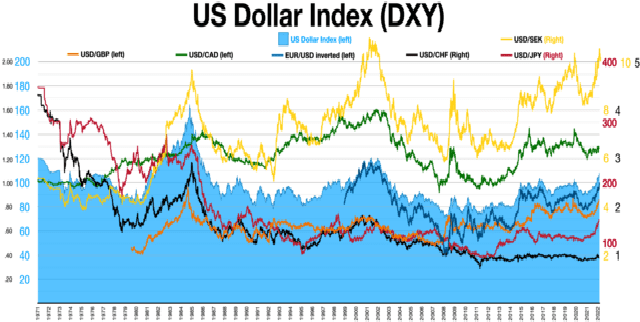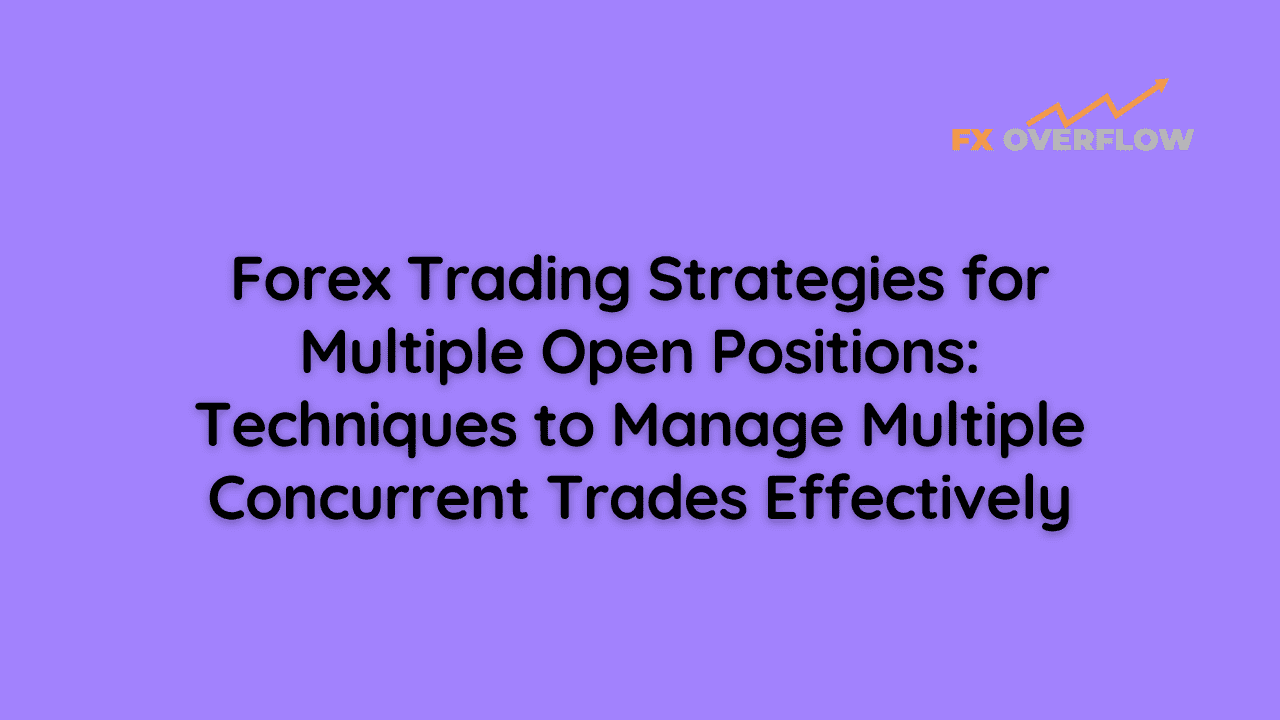Forex Trading Strategies for Multiple Open Positions: Techniques to Manage Multiple Concurrent Trades Effectively
Forex trading, the world's largest financial market, offers a multitude of opportunities for traders to profit from the fluctuations in exchange rates. As traders gain experience and confidence, they often find themselves juggling multiple open positions simultaneously. However, managing numerous concurrent trades can be a daunting task that requires careful planning, discipline, and effective strategies to avoid unnecessary risks. In this comprehensive guide, we will explore various techniques and strategies to manage multiple open positions in the Forex market effectively.

Table Content
1. Understanding the Challenge
2. Developing an Effective Trading Plan
3. Implementing Risk Management Techniques
4. Efficient Trade Management Techniques
5. Mastering the Trader's Mindset
6. Frequently Asked Questions (FAQs)
7. Footnote
Understanding the Challenge
Managing multiple open positions is not just about executing trades; it's about orchestrating a well-coordinated trading plan that takes into consideration risk management, market analysis, and timely decision-making. As the number of open trades increases, so does the complexity of handling them. Traders must find a balance between diversification and overexposure, while also considering time constraints and emotional resilience.

Developing an Effective Trading Plan
A robust trading plan forms the foundation for managing multiple open positions successfully. Here are the key elements to include:
- Risk Tolerance Assessment: Before placing any trade, it's crucial to determine your risk tolerance. Assign a percentage of your trading capital that you're willing to risk on each trade. This will help you manage your overall exposure and prevent overextending yourself.
- Diversification: Don't put all your eggs in one basket. Diversifying your trades across different currency pairs and trading strategies can help spread risk. However, be cautious not to overdiversify, as this can lead to diluted profits and reduced focus.
- Entry and Exit Strategies: Clearly define the conditions that will trigger your entry into a trade and the criteria for exit. This could involve technical indicators, price levels, or fundamental factors. Sticking to your predefined strategies can help eliminate impulsive decisions.
- Position Sizing: Determine the appropriate lot size for each trade based on your risk tolerance and the distance to your stop-loss. Avoid the temptation to trade larger sizes during winning streaks, as this can expose you to unnecessary risks.
Implementing Risk Management Techniques
Managing risk is paramount when dealing with multiple open positions. Even the most promising trades can turn against you, and proper risk management ensures that you can weather such storms without decimating your capital.
- Setting Stop-Loss Orders: Always set stop-loss orders for each trade to limit potential losses. Place these orders at strategic levels that consider the currency pair's volatility and your trade's time horizon.
- Using Trailing Stops: Trailing stops are dynamic stop-loss orders that adjust as the trade moves in your favor. This allows you to lock in profits while still giving the trade room to breathe.
- Correlation Analysis: Be mindful of correlations between currency pairs. If you have multiple trades open, particularly in pairs that are positively correlated, you could inadvertently be doubling your exposure. Correlation analysis helps you avoid this pitfall.
- Monitoring Economic Calendar: Stay informed about scheduled economic events and news releases that could impact your trades. Sudden market movements can trigger stop-loss orders or lead to unforeseen opportunities.
Efficient Trade Management Techniques
Effectively managing multiple open positions goes beyond risk management. It involves maintaining a clear overview of your trades and making informed decisions based on real-time data.
- Use of Trading Journals: Maintain a trading journal to track your trades, the rationale behind each one, and the outcome. This helps you learn from both successes and mistakes, refining your strategies over time.
- Utilizing Trading Platforms: Choose a trading platform that offers a user-friendly interface and tools for managing multiple trades. These platforms often provide features like visual trade summaries, alerts, and advanced order types.
- Time Management: Time zones can significantly impact your ability to manage trades. If you're trading multiple pairs involving different regions, consider using limit orders to automatically execute trades during off-hours.
Mastering the Trader's Mindset
Trading psychology plays a significant role when managing multiple open positions. Emotional control and discipline are essential to prevent impulsive decisions that could lead to unnecessary losses.
- Avoid Revenge Trading: A losing trade might tempt you to seek revenge by immediately entering another trade to recoup losses. This impulsive behavior can amplify losses. Stick to your trading plan and avoid emotional trading.
- Stay Emotionally Detached: Detach yourself from the outcome of individual trades. The market is unpredictable, and losses are a natural part of trading. Focusing on the bigger picture helps reduce stress and anxiety.

- Take Breaks: Monitoring the market 24/7 can lead to burnout and poor decision-making. Schedule breaks to recharge your mind and prevent fatigue-induced errors.
Frequently Asked Questions (FAQs)
Q1: How many open positions can I manage effectively?
A: The number of open positions you can handle depends on your experience, risk tolerance, and trading strategy. Start with a manageable number and gradually increase as you gain confidence.
Q2: Should I close losing trades immediately?
A: It depends on your trading plan and analysis. If a trade is moving against you but still adheres to your strategy, you might consider adjusting your stop-loss rather than closing the trade prematurely.
Q3: What's the role of automation in managing multiple trades?
A: Automation can help execute trades based on predefined criteria, reducing the need for constant monitoring. However, careful testing is essential to ensure automated strategies align with your trading goals.
Q4: How do I prioritize my attention among multiple trades?
A: Prioritize trades based on their potential impact and the timing of economic events. Focus on trades with imminent news releases or those nearing critical price levels.
Q5: Is it better to specialize in a single currency pair or trade multiple pairs?
A: Both approaches have merits. Specializing in a single pair allows for in-depth analysis, while trading multiple pairs diversifies risk. The choice depends on your trading style and preferences.
Footnote
Effectively managing multiple open positions in the Forex market demands a blend of strategic planning, risk management, and psychological resilience. Traders who master these aspects can navigate the challenges of multitasking while maximizing their potential for profits. By adhering to a well-structured trading plan, utilizing efficient management techniques, and cultivating a disciplined mindset, traders can transform the complexities of handling concurrent trades into a rewarding and successful trading journey.











Discussion